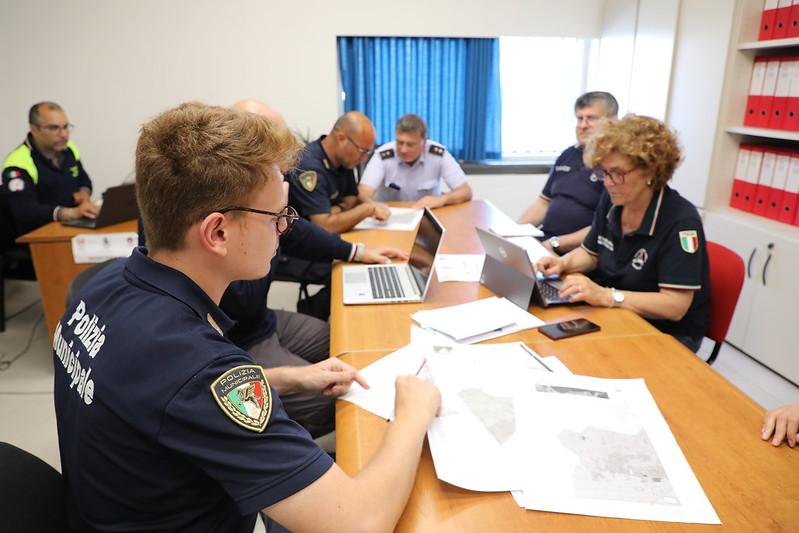Seismic swarm in the Phlegraean Fields: activities of the Civil Protection System continue
State of mobilization of the National Civil Protection Service declared

Ten days after the magnitude 4.4 earthquake that struck the Phlegraean Fields area on May 20, the Civil Protection System continues its activities. The Department is working closely with the Campania Region and the Municipal Operational Centres (COC) in Bacoli, Naples, and Pozzuoli, as well as the Relief Coordination Centre (CCS) at the Prefecture of Naples. Their efforts are focused on assisting the population and assessing damage to buildings.
May 20 was the most energetic event recorded since the beginning of the bradyseismic crisis in 2005. The epicenter is located inside the Solfatara at a depth of 2.6 km.
In response to the current events, the Campania Region requested the mobilization of the National Civil Protection Service (SNPC) yesterday. This involves the mobile columns of other Regions and Autonomous Provinces, organized civil protection volunteers, and national operational structures to provide assistance and rescue to the affected population. The state of mobilization was declared today by a decree from the Minister for Civil Protection and Sea Policies, Nello Musumeci.
In the Municipality of Pozzuoli, 1,168 inspections were carried out by municipal experts and firefighters out of approximately 1,400 requests. As a result, 138 buildings were evacuated. 51 ordinances have been issued, of which 1 has been revoked, and 32 are warnings to enter places. Other orders are being finalized. A total of 213 applications for accommodation assistance have been filed: 43 households are accommodated in hotels, 46 have refused aid, and 22 have opted for independent accommodation. Last night, 14 people were housed at the Palatrincone. Regarding schools, 3 buildings belonging to the municipality are currently unfit for use.
In the municipality of Bacoli, there were 92 requests for assessment of building damage. 87 inspections have already been carried out, one building has been evacuated, and 5 will be carried out soon. All schools located in the municipality have been declared fit for use.
The Vesuvius Observatory of the National Institute of Geophysics and Volcanology (INGV) is closely monitoring the volcano's status. There have been no major seismic events in recent hours, and the ground deformation rate has returned to levels of the last period after some fluctuations in the previous days. As of now, other monitored parameters show no significant changes.
Yesterday, the National Commission for the Forecasting and Prevention of Major Risks met and found that the volcano's status was substantially unchanged from its meeting on May 22. Therefore, the alert level remains 'yellow.'
During the meeting, which was also attended by international experts, the accuracy of short-term eruption forecasts was also explored. This was done by analyzing recent volcanic crises as a case study, comparing methods and timing, examining the use of alert levels for forecasting and operational purposes in different countries, and evaluating the existing links between scientific analysis and forecasting.
The case study confirms that only some of the volcanic crises examined culminated in eruptive activity. In most cases, the volcanic reactivation process starts with seismic and ground deformation phenomena, as well as changes in geochemical parameters, over extended periods of time (months to years). This first phase is followed by a second one of rapid pre-eruptive acceleration, in which the geochemical, seismic, and deformation signals experience a further increase. This pre-eruptive phase develops over short periods, generally in hours or days.
In light of these critical issues, the Commission emphasized the importance of promptly updating the alert levels of the Emergency Plans for the Phlegraean Fields to ensure that the operational indications align with the current state of scientific knowledge.
The Civil Protection Department acknowledges the existing evidence and that planning is a dynamic process requiring constant updating. It values the scientific support offered by the Commission for revising this scheme and will implement necessary activities to adapt alert levels for the Phlegraean Fields, along with subsequent operational actions.